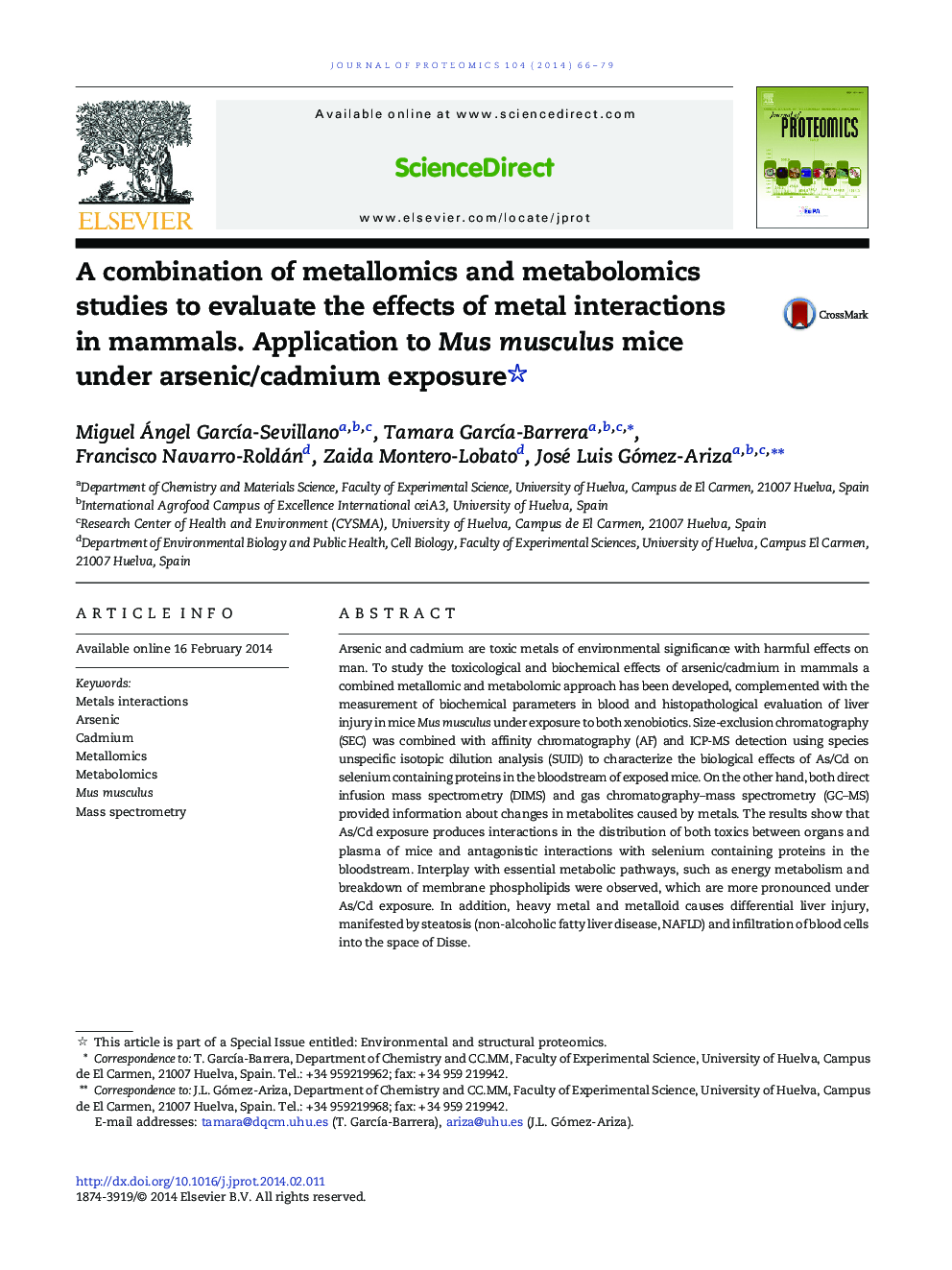| کد مقاله | کد نشریه | سال انتشار | مقاله انگلیسی | نسخه تمام متن |
|---|---|---|---|---|
| 1225179 | 1494776 | 2014 | 14 صفحه PDF | دانلود رایگان |

• Use of omics for toxicological and biochemical effects of arsenic/cadmium in mice
• Use of blood biochemicals and liver histopathology to monitor mice metal exposure
• As/Cd exposure produces changes in Se-containing proteins and metabolic pathways.
• Metallomics and metabolomics provide deep information in mice exposure experiments.
Arsenic and cadmium are toxic metals of environmental significance with harmful effects on man. To study the toxicological and biochemical effects of arsenic/cadmium in mammals a combined metallomic and metabolomic approach has been developed, complemented with the measurement of biochemical parameters in blood and histopathological evaluation of liver injury in mice Mus musculus under exposure to both xenobiotics. Size-exclusion chromatography (SEC) was combined with affinity chromatography (AF) and ICP-MS detection using species unspecific isotopic dilution analysis (SUID) to characterize the biological effects of As/Cd on selenium containing proteins in the bloodstream of exposed mice. On the other hand, both direct infusion mass spectrometry (DIMS) and gas chromatography–mass spectrometry (GC–MS) provided information about changes in metabolites caused by metals. The results show that As/Cd exposure produces interactions in the distribution of both toxics between organs and plasma of mice and antagonistic interactions with selenium containing proteins in the bloodstream. Interplay with essential metabolic pathways, such as energy metabolism and breakdown of membrane phospholipids were observed, which are more pronounced under As/Cd exposure. In addition, heavy metal and metalloid causes differential liver injury, manifested by steatosis (non-alcoholic fatty liver disease, NAFLD) and infiltration of blood cells into the space of Disse.Biological significanceThis work presents new contributions in the study of arsenic/cadmium interactions in mice Mus musculus under controlled exposure. With the combination of metallomic and metabolomic approaches the traffic of As and Cd from liver to kidney by means of blood was observed and excretion of As (as arsenic metabolites) or Cd (as MTCd) is inhibited with the simultaneous administration of As/Cd, and these toxic elements have important influence in the levels of seleno-proteins in the plasma. In addition, the metabolomic approach reveals inhibition of different metabolic cycles such as tricarboxylic acid and phospholipid degradation that causes membrane damage and apoptosis that is histopathologically confirmed.This article is part of a Special Issue entitled: Environmental and structural proteomics.
Figure optionsDownload high-quality image (86 K)Download as PowerPoint slide
Journal: Journal of Proteomics - Volume 104, 2 June 2014, Pages 66–79